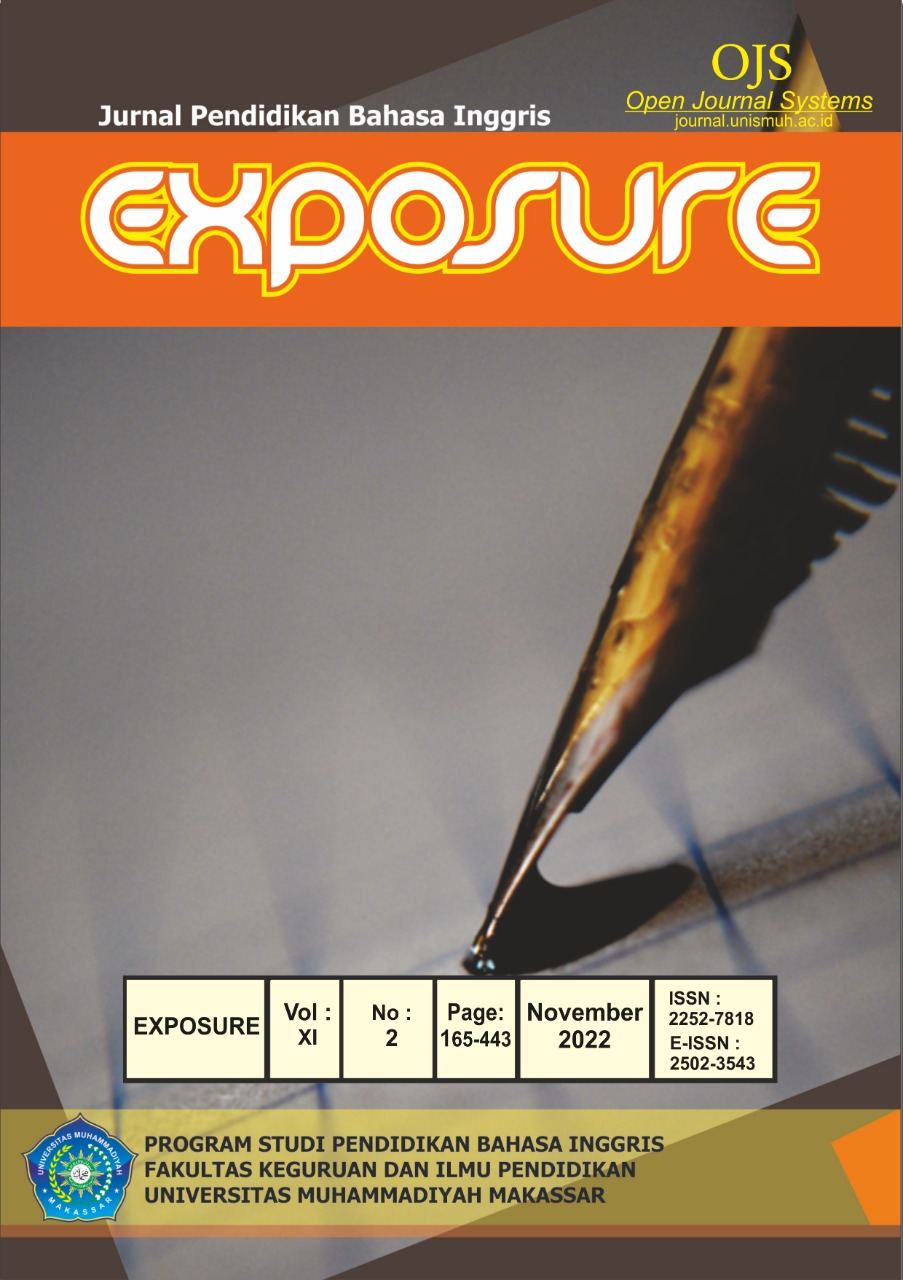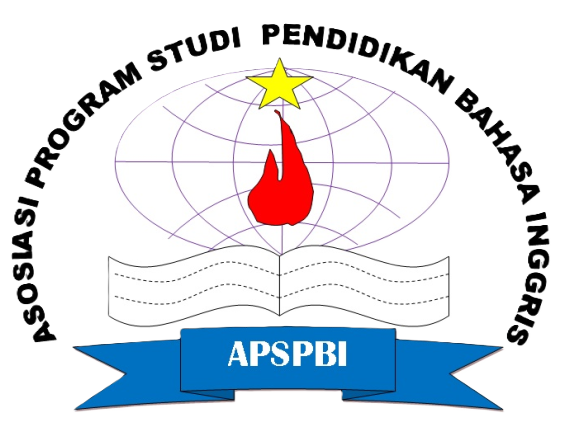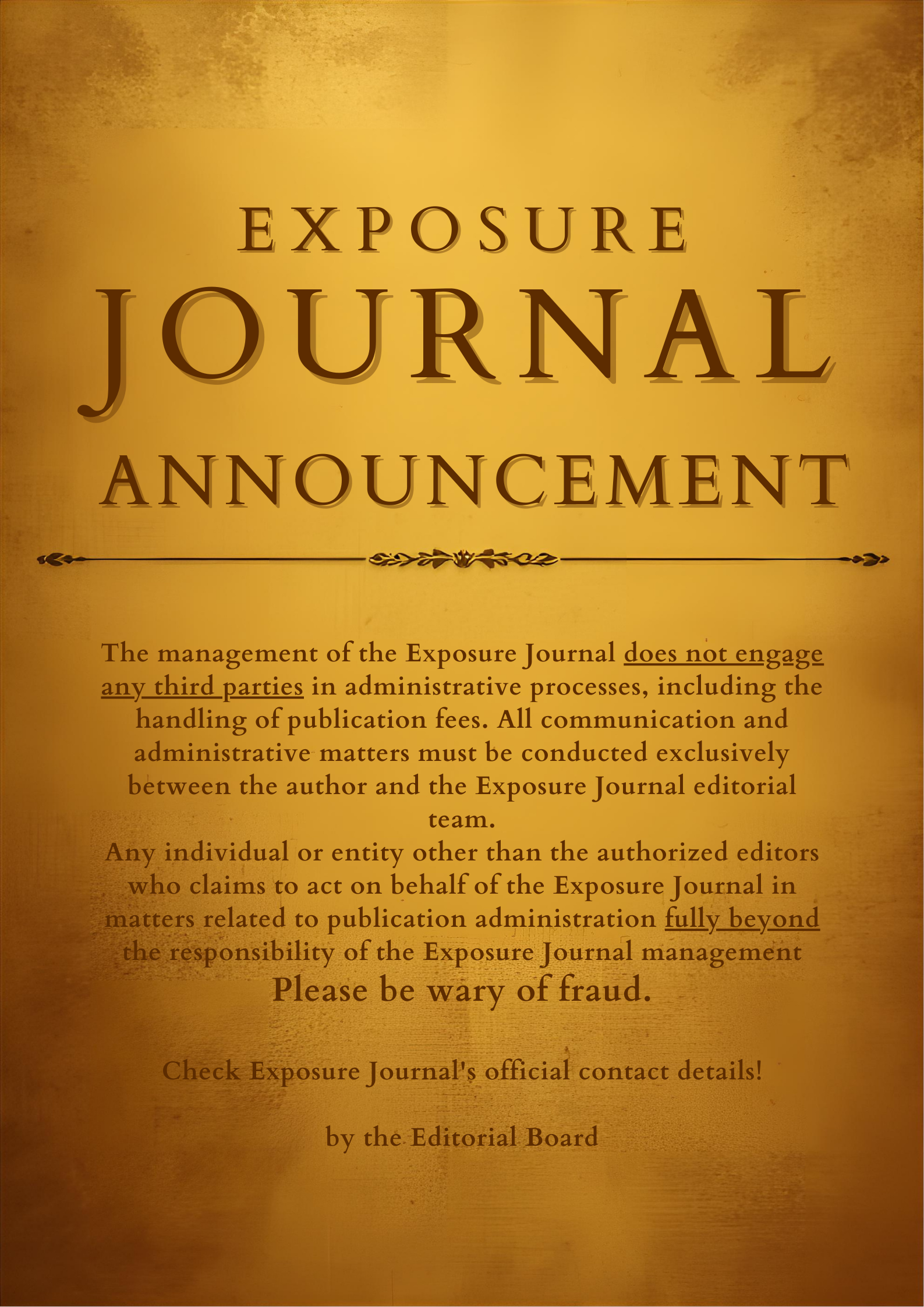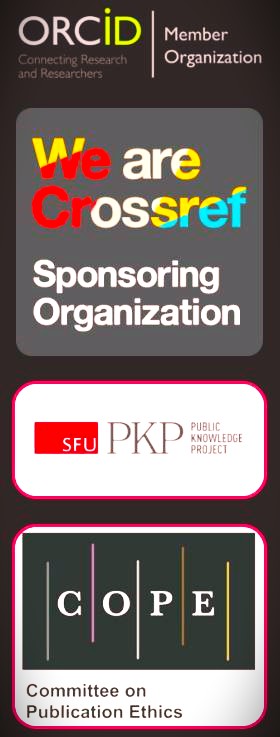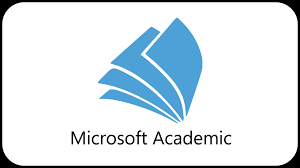THE PFAR-BASED FLIPPED CLASSROOM AT ELEMENTARY SCHOOL: STUDENTS’ VOCABULARY MASTERY
DOI: https://doi.org/10.26618/exposure.v11i2.8890
Vocabulary, The PFAR, Flipped Classroom, Active Learning
Abstract
Vocabulary mastery is essential to help students learn English. However, many elementary students struggle with having sufficient vocabulary. This classroom action research aims to improve elementary students' vocabulary mastery through the PFAR-based flipped classroom. PFAR, which stands for Plan, Flip, Assess, and Reflect, is a recent development of flipped classroom for teaching English to young learners. The participants of this study included 15 grade VI students from an Islamic elementary school. The data were collected using tests, observations, and interviews. The findings revealed that the PFAR-based flipped classroom enhanced the students' vocabulary mastery. This improvement was made possible by active learning during vocabulary lessons. The students learned vocabulary through videos, pictures, and academic games, both online and in face-to-face classes. The results of the tests showed that the students were able to achieve the learning objectives, namely (1) understanding the meaning of certain vocabulary; (2) writing certain vocabulary with correct spelling; and (3) applying certain vocabulary in simple sentences. All the students yielded a mean score of more than 70 on five vocabulary tests. In addition, they became more active during the lessons and confirmed that the entire learning process was more attractive. All of this evidence suggests that this research was successful in improving students' vocabulary mastery.
References
Al Qasmi, A. M. B., Al Barwani, T., & Al Seyabi, F. (2022). Flipped classrooms and their effect on Omani students’ vocabulary achievement and motivation towards learning English. Journal of Education and Learning (EduLearn), 16(2), 152–163. https://doi.org/10.11591/edulearn.v16i2.20324
Alnuhayt, S. S. (2018). Investigating the use of the flipped classroom method in an EFL vocabulary course. Journal of Language Teaching and Research, 9(2), 236-242. http://dx.doi.org/10.17507/jltr.0902.03
Anggraena, Y., Felicia, N., Ginanto, D. E., Pratiwi, I., Utama, B., Alhapip, L., & Widiaswati, D. (2022). Kurikulum untuk pemulihan pembelajaran. Pusat Kurikulum dan Pembelajaran, Badan Standar, Kurikulum, dan Asesmen Pendidikan, Kementerian Pendidikan, Kebudayaan, Riset, dan Teknologi.
Ary, D., Jacobs, L. C., Sorensen, C., & Razavieh, A. (2010). Introduction to research in education. Cengage Learning.
Aziz, I. N., & Rohmah, I. S. Z. (2022). The use of flipped learning strategy in teaching English vocabulary at elementary school. Journal of English Education and Technology, 3(1), 30–43.
Bavi, F. (2018). The effect of using fun activities on learning vocabulary at the elementary level. Journal of Language Teaching and Research, 9(3), 629-639. https://doi.org/10.17507/jltr.0903.24
Bergmann, J., & Sams, A. (2012). Flip your classroom. International Society for Technology in Education.
Clare, A. (2017). The power of video. In K. Donaghi, & D. Xerri (Eds.), The Image in English Language Teaching (pp. 33-42). ELT Council.
Clark, K. R. 2015. The effects of the flipped model of instruction on student engagement and performance in the secondary mathematics classroom. Journal of Educators Online, 12(1), 91–115.
Dhawan, S. (2020). Online learning: a panacea in the time of COVID-19 crisis. Journal of Educational Technology Systems, 49(1), 5–22. https://doi.org/10.1177/0047239520934018
Fauzi, A., & Aini, M. R. (2020). An extended flipped classroom: The PFAR model. Insan Cendekia Mandiri.
Fernandes, M. A., Wammes, J. D., & Meade, M. E. (2018). The surprisingly powerful influence of drawing on memory. Current Directions in Psychological Science, 27(5), 302–308. https://doi.org/10.1177/0963721418755385
Kemmis, S., McTaggart, R., & Nixon, R. (2014). The action research planner: Doing critical participatory action research. Springer Science + Business Media.
Kırmızı, Ö., & Kömeç, F. (2019). The impact of the flipped classroom on receptive and productive vocabulary learning. Journal of Language and Linguistic Studies, 15(2), 437-449.
Kusnandar. (2021, June 24). Flipped classroom sebagai solusi pembelajaran tatap muka bergilir pasca pandemi. Pusat Data dan Teknologi Informasi. https://pusdatin.kemdikbud.go.id/flipped-classroom-sebagai-solusi-pembelajaran- tatap-muka-bergilir-pasca-pandemi/
Latipah, I., Saefullah, H., & Rahmawati, M. (2020). Students’ behavioral, emotional, and cognitive engagement in learning vocabulary through flipped classroom. English Ideas: Journal of English Language Education, 1(1), 93-100.
Lo, C. K., & Hew, K. F. (2017). A critical review of flipped classroom challenges in K-12 education: possible solutions and recommendations for future research. Research and Practice in Technology Enhanced Learning, 12(1). https://doi.org/10.1186/s41039- 016-0044-2
Marzano, R. J., & Simms, J. A. (2013). Vocabulary for the common core. Marzano Research Lab.
Reidsema, C., Hadgraft, R., & Kavanagh, L. (2017). Introduction to the flipped classroom. In C. Reidsema, L. Kavanagh, R. Hadgraft, & N. Smith (Eds.), The Flipped Classroom: Practice and Practices in Higher Education (pp. 3-14). Springer.
Thornbury, S. (2002). How to teach vocabulary. Pearson Education Limited.
Yang, S. C., Liu, Y. T., & Todd, A. G. (2019). Effects of flipped classroom on high-and low- achievers’ English vocabulary learning. Journal of Asia TEFL, 16(4), 1251–1267). https://doi.org/10.18823/asiatefl.2019.16.4.12.1251
Downloads
Published
How to Cite
Issue
Section
License
Authors who publish with this journal agree to the following terms:
In order to assure the highest standards for published articles, a peer review policy is applied. In pursue of the compliance with academic standards, all parties involved in the publishing process (the authors, the editors and the editorial board and the reviewers) agree to meet the responsibilities stated below in accordance to the Journal publication ethics and malpractice statement.
Duties of Authors:
- The author(s) warrant that the submitted article is an original work, which has not been previously published, and that they have obtained an agreement from any co-author(s) prior to the manuscript’s submission;
- The author(s) should not submit articles describing essentially the same research to more than one journal;
- The authors(s) make certain that the manuscript meets the terms of the Manuscript Submission Guideline regarding appropriate academic citation and that no copyright infringement occurs;
- The authors(s) should inform the editors about any conflict of interests and report any errors they subsequently, discover in their manuscript.
Duties of Editors and the Editorial Board:
- The editors, together with the editorial board, are responsible for deciding upon the publication or rejection of the submitted manuscripts based only on their originality, significance, and relevance to the domains of the journal;
- The editors evaluate the manuscripts compliance with academic criteria, the domains of the journal and the guidelines;
- The editors must at all times respect the confidentiality of any information pertaining to the submitted manuscripts;
- The editors assign the review of each manuscript to two reviewers chosen according to their domains of expertise. The editors must take into account any conflict of interest reported by the authors and the reviewers.
- The editors must ensure that the comments and recommendations of the reviewers are sent to the author(s) in due time and that the manuscripts are returned to the editors, who take the final decision to publish them or not.
Authors are permitted and encouraged to post online a pre-publication manuscript (but not the Publisher’s final formatted PDF version of the Work) in institutional repositories or on their Websites prior to and during the submission process, as it can lead to productive exchanges, as well as earlier and greater citation of published work (see The Effect of Open Access). Any such posting made before acceptance and publication of the Work shall be updated upon publication to include a reference to the Publisher-assigned DOI (Digital Object Identifier) and a link to the online abstract for the final published Work in the Journal.

